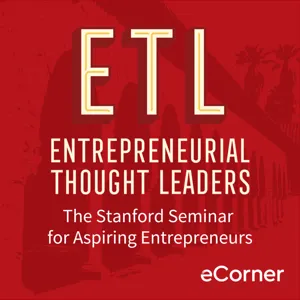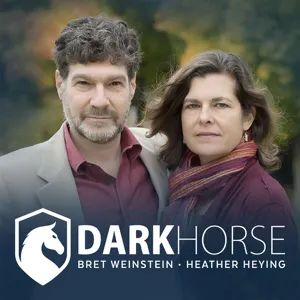Podcast Summary
Discussing and destigmatizing breaches in cybersecurity: Two experienced CISOs aim to host open discussions about breaches to share lessons and reduce stigma, inviting guests and encouraging audience questions.
Jeff Belknap and Joel Fischer aim to use their Clubhouse room to discuss and destigmatize breaches in the cybersecurity industry. As experienced CISOs, they have seen firsthand that breaches are a common occurrence and believe that open discussions about them can lead to valuable lessons learned. They plan to invite special guests to join their conversations and encourage questions from the audience. Their goal is to make these discussions accessible to a wider audience and reduce the stigma surrounding breaches. They hope to create a space where people can learn from each other and share insights into how to prevent and respond to cybersecurity incidents. The conversations will not only cover high-profile breaches but also the less publicized ones that impact companies every day. The ultimate objective is to create a community where cybersecurity professionals and enthusiasts can come together to learn and grow.
Understanding the difference between a hack and a breach: The human impact of security breaches, such as loss of trust, is often overlooked. Hacks gain attention, but breaches cause real damage.
Security breaches, although often stigmatized and shrouded in secrecy, are becoming less of a mystery as more legislation requires reporting. A recent example is the compromised IP camera provider, Burkata. Hackers gained access to administrative credentials, leading to significant breaches of trust and potential human impact. This incident highlights the importance of understanding the distinction between a hack and a breach. While the hacker gained access to cameras and possibly even claimed access to larger systems, the actual breach was the violation of trust between the camera buyer and the provider. As we navigate the complexities of the cybersecurity landscape, it's crucial to recognize the human impact of these incidents and strive for transparency and accountability.
Effective communication during a data breach: Transparency builds trust and helps maintain customer loyalty during a data breach. Companies should communicate clearly and quickly to all stakeholders, including media, employees, and the public.
Transparency and quick communication are key during a data breach. Cloudflare, as an example, handled the situation effectively by providing clear information about the breach and addressing media, employees, customers, and the public within less than 24 hours. They even responded to false claims on social media, quoting the tweets to clarify the situation. Having a disciplined process for communication during an incident is crucial, as it helps to mitigate panic and potential further damage to reputation. Companies should remember that transparency builds trust and helps to maintain customer loyalty.
Transparency and Communication During a Security Incident: Being transparent and communicative during a security incident is crucial for maintaining trust and reputation. Clear, concise responses, a dedicated team, and a threat model can help alleviate customer fears and reveal areas for improvement.
Transparency and communication are crucial during a security incident. When a company like CloudFlare experiences a potential breach, it's essential to address all concerns head-on, even if the answers may not be ideal. Having a clear and concise response, along with a threat model to back it up, can help turn the situation around and alleviate customer fears. Additionally, having a team dedicated to handling inbound security-related questions can make the process smoother. Furthermore, incidents serve as valuable learning experiences, revealing areas where improvements can be made, such as logging and IoT device management. By being open and proactive, companies can build trust and maintain their reputation during challenging times.
Importance of logging and monitoring third-party services and infrastructure: Effective logging and analysis are essential for detecting and responding to potential security breaches in third-party services and infrastructure. Be prepared for increasing frequency of third-party breaches by analyzing outbound traffic, considering third-party software security, and building security in from the start.
Logging and monitoring third-party services and infrastructure, including hardware and software, is crucial for detecting and responding to potential security breaches. The speakers discussed their experiences dealing with various incidents, including unauthorized access to cameras and intrusion detection systems. They emphasized the importance of having good logs and the ability to analyze them effectively. The speakers also noted the increasing frequency of third-party breaches and the need to be prepared to respond to them. They suggested analyzing outbound traffic to catch anomalies and considering the security of third-party software that calls out to the Internet. The discussion also touched on the importance of building security in from the beginning and the potential risks of backdoors or super admin credentials. A recent Vice Magazine article highlighted the risks of third-party SMS message services, providing an interesting parallel to the IoT camera issue. Overall, the conversation underscored the importance of being proactive and vigilant when it comes to third-party security.
Designing Systems with Future Considerations: Consider potential threats and vulnerabilities, even those not immediately apparent. Build in features to address issues once identified, but note that not all systems may be easily upgraded. Thoroughly explore all aspects of security in questionnaires to avoid missing crucial vulnerabilities.
As technology advances and systems become more complex, it's crucial to consider potential threats and vulnerabilities, even those that may not be immediately apparent. The SMS system serves as an example, where legislation requiring number portability led to the ability for malicious actors to redirect messages. This highlights the importance of designing systems with future considerations in mind and building in features that make it easy to address issues once they're identified. However, it's important to note that not all systems, especially older, distributed ones, may be as easily upgraded or changed. Furthermore, the discussion also touched upon the lack of thorough exploration of certain security aspects in questionnaires, which could leave important vulnerabilities unaddressed. In the case of SMS systems, the existence of admin accounts and their protection levels are crucial aspects that should be evaluated. Overall, the conversation underscores the need for a holistic approach to security, including thorough threat modeling and regular assessments to ensure the protection of critical infrastructure.
The human element is a significant challenge in security: Despite technological advancements, the human element remains a significant challenge in security. Knowing your customers and being vigilant against unauthorized access are crucial.
Relying on static, identical credentials for device administration is a potential security risk. This lesson was learned from a breach at Verkada, and it led to the creation of new tools like Slack's Go Audit to help manage and query production infrastructure data more effectively. However, the human element remains a significant challenge in security. Sophisticated attackers often exploit customer support channels to gain unauthorized access to SaaS accounts. The importance of knowing your customers is widely accepted in banking but not everywhere else. People are the weakest link in security, and even high-security installations like Andrews Air Force Base have been breached by individuals wearing bunny ears. While technology can help, it ultimately depends on well-intentioned, smart humans to make it effective. Technology can assist in decision-making and toil reduction but cannot replace humans entirely. The human element, especially when it comes to monitoring, remains a significant challenge in security.
Remote work security challenges and real-life examples: Invest in robust security solutions and equip employees with resources and training to securely work from home to mitigate risks and protect against unconventional threats.
Securing remote workers has become a major challenge for organizations, especially since the sudden shift to remote work last year. The inconsistent scaling of technology solutions and the mix of personal and company-issued devices in the environment can lead to significant security risks. A notable example is Capcom's ransomware attack, which resulted in employees returning to the office during the pandemic. While it's impossible to know all the details, it's clear that dragging everyone back to the office isn't a viable solution for security leaders. Instead, their mission is to help businesses grow and thrive while ensuring safety and adding value for customers and partners. A more effective approach would be to invest in robust security solutions and provide employees with the necessary resources and training to work securely from home. Another interesting case involved a mother who used her access to hack into her local high school's system to help her daughter get nominated for homecoming queen. These stories highlight the importance of strong security measures and the need to stay vigilant against unconventional threats.
Staying Connected and Engaging in Meaningful Conversations: Even seemingly casual conversations can lead to valuable insights and connections. Keep engaging, stay curious, and appreciate the opportunities to learn from and with others.
Jeff emphasized the importance of staying connected and engaging in meaningful conversations, even if the topic may not seem critically important at first. He expressed gratitude to everyone who participated and shared their perspectives, and mentioned plans to continue these weekly sessions. The overall tone was positive and upbeat, with a sense of excitement for the potential growth and development of these interactions. It's a reminder that even seemingly casual conversations can lead to valuable insights and connections. So, keep engaging, stay curious, and appreciate the opportunities to learn from and with others.





